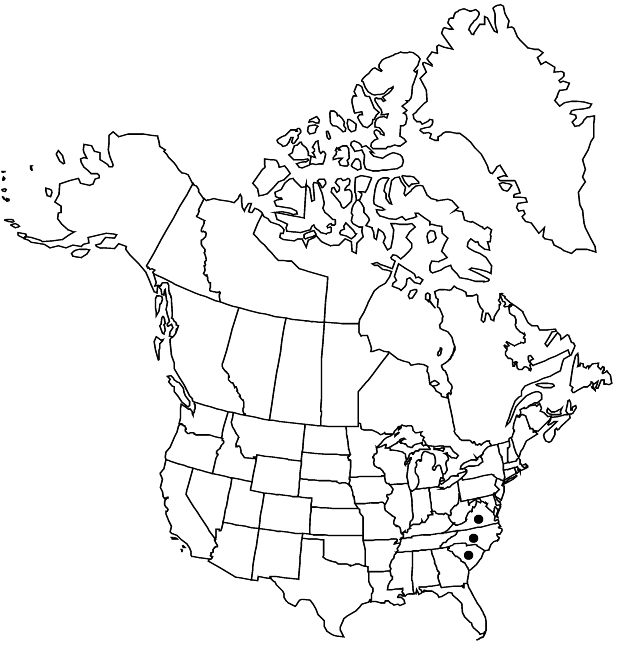Difference between revisions of "Heuchera caroliniana"
Rhodora 81: 575. 1979,.
FNA>Volume Importer |
imported>Volume Importer |
||
| (2 intermediate revisions by 2 users not shown) | |||
| Line 52: | Line 52: | ||
|publication year= | |publication year= | ||
|special status= | |special status= | ||
| − | |source xml=https:// | + | |source xml=https://bitbucket.org/aafc-mbb/fna-data-curation/src/2e0870ddd59836b60bcf96646a41e87ea5a5943a/coarse_grained_fna_xml/V8/V8_184.xml |
|genus=Heuchera | |genus=Heuchera | ||
|species=Heuchera caroliniana | |species=Heuchera caroliniana | ||
Latest revision as of 22:42, 5 November 2020
Herbs acaulescent; caudex branched. Flowering stems leafy, 30–105 cm, short stipitate-glandular. Leaves: petiole glabrous or short stipitate-glandular; blade broadly ovate, shallowly 5-lobed, 3–10.5 cm, base cordate or nearly truncate, lobes rounded or ovate, margins dentate, apex acute or obtuse, surfaces glabrous or minutely stipitate-glandular on veins abaxially, glabrous or short stipitate-glandular adaxially. Inflorescences diffuse. Flowers: hypanthium weakly bilaterally symmetric, free 1.3–2.5 mm, green, subglobose, abruptly inflated distal to adnation to ovary, 2.8–4.5 mm, short stipitate-glandular; sepals erect, green-tipped, equal, 0.4–1.5 mm, apex rounded; petals erect, white or pink, broadly spatulate, unlobed, 0.6–1 mm, margins entire; stamens exserted 0.2–1.5 mm; styles included from 1 mm to exserted 1.1 mm, 1–3.5 mm, to 0.1 mm diam; (stigmas from 0.5 mm included to 1.1 mm exserted). Capsules ovoid, 4–7 mm, beaks divergent, not papillose. Seeds dark brown, ellipsoid, 0.5–0.8 mm. 2n = 14.
Phenology: Flowering Apr–Jun.
Habitat: Rich upland woods on base-saturated substrates, basic dikes and basic rock outcroppings
Elevation: 30-300 m
Distribution

N.C., S.C., Va.
Discussion
The geographic range of Heuchera caroliniana is contiguous with and appears to be a southern extension of that of H. pubescens. Heuchera americana var. americana occurs in counties adjacent to the range of H. caroliniana but they are sympatric only along the boundary; intergradation between the two is infrequent. Mixed populations of H. caroliniana and H. americana var. americana have not been seen.
Selected References
None.